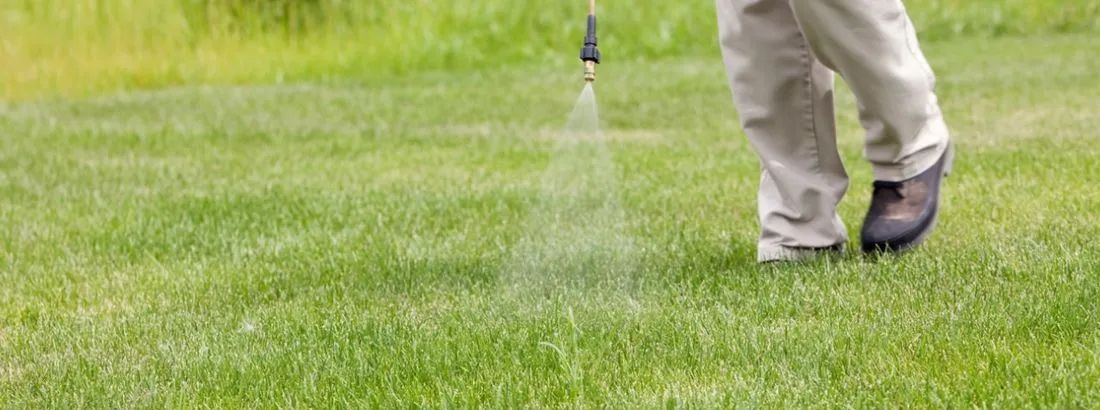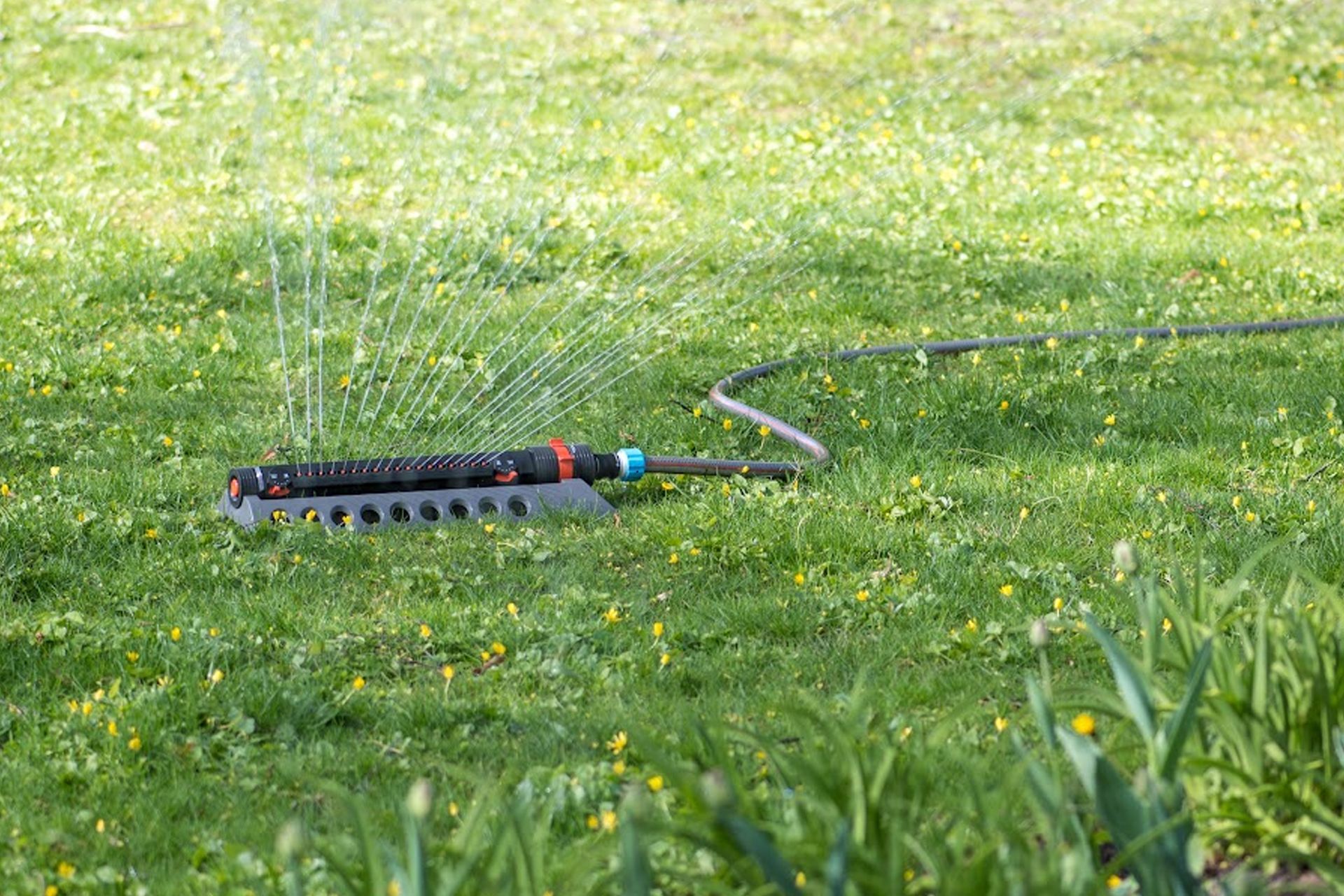VETERAN OWNED
May 07, 2024
Revitalize Your Lawn: Five Growth-Boosting Services for Shelby Township, MI
As a homeowner, you understand the value of a well-maintained lawn. It adds aesthetic appeal to your property, increases its market value, and provides a comfortable space for outdoor activities. However, maintaining a vibrant and healthy lawn requires time, effort, and expertise. If your lawn looks lackluster and needs rejuvenation, you might wonder how to restore its former glory. This blog will share five essential lawn care services that will transform your lawn from drab to fab.
1. Lawn Aeration: Breathing Life into Your Lawn
Aeration is a crucial step in lawn care that is often overlooked. Over time, soil can become compacted, especially in high-traffic areas, making it difficult for grassroots to absorb water, oxygen, and essential nutrients. This can lead to weak, thin grass or even bare spots on your lawn.
The Process of Aeration
Aeration involves perforating the soil with small holes to allow air, water, and nutrients to penetrate the grassroots. This helps the roots grow deeply and produce a stronger, more vigorous lawn. The main reason for aerating is to alleviate soil compaction.
The Benefits of Aeration
Aeration promotes healthier and more robust grass growth by breaking up the soil compaction. It allows water, oxygen, and nutrients to reach the grassroots more efficiently, creating a more lush and vibrant lawn. It also helps to improve drainage, reducing the risk of waterlogging and associated lawn diseases.
2. Overseeding: Filling in the Gaps
If your lawn has thin, sparse or patchy areas, overseeding is the solution you need. As the name suggests, overseeding involves spreading grass seed over an existing lawn. It's a straightforward way to improve your lawn's density and appearance and can also help enhance its color and disease resistance.
How Overseeding Works
Overseeding introduces new and improved grass varieties to your existing lawn. These new grasses compete with the existing grasses for resources, leading to a more diverse and resilient lawn.
The Benefits of Overseeding
Overseeding can help to fill in bare spots in your lawn, improving its overall density and appearance. It can also help to enhance the color of your lawn, as the new grass varieties may have a darker and more vibrant color than the existing grasses. Additionally, overseeding can also improve the disease resistance of your lawn, as the new grass varieties may be more resistant to certain lawn diseases than the existing grasses.
3. Fertilization Treatments: Nourishing Your Lawn
Fertilization is a critical component of lawn care. It involves applying nutrients to your lawn to promote healthy and vigorous growth. While lawns can derive some nutrients from the soil, they often need a little extra help, especially in areas where the soil is low in particular nutrients.
Understanding Lawn Fertilizer

Lawn fertilizers typically contain three main nutrients: nitrogen, phosphorus, and potassium. Nitrogen promotes leaf and stem growth, making your lawn lush and green. Phosphorus aids in root development, helping your grass to establish a strong and healthy root system. Potassium boosts the overall health of your grass, increasing its resistance to disease and drought.
The Importance of Regular Fertilization
Regular fertilization is essential for maintaining a healthy and vibrant lawn. It not only makes your lawn look better, but it also makes it healthier and more resilient. A well-fertilized lawn can better withstand stress, such as drought, foot traffic, and disease, and it can recover more quickly from these stresses.
4. Weed Control: Protecting Your Lawn
Weeds are a common problem in many lawns, and they can quickly take over if left unchecked. Not only do they look unsightly, but they also compete with your grass for resources, such as water, light, and nutrients.
Identifying Lawn Weeds
Many types of weeds can Many infest your lawn, and it's important to know what you're dealing with to control them effectively. Common lawn weeds include dandelions, crabgrass, and clover.
Effective Weed Control Strategies
Effective weed control involves more than just pulling out the visible weeds. It also consists of preventing new weeds from germinating and spreading. This can be achieved through a combination of good lawn care practices, such as regular mowing and proper watering, and the use of weed control products.
5. Soil Testing and pH Balancing: Creating the Ideal Environment for Your Lawn
The health and vitality of your lawn are heavily influenced by the condition of the soil in which it grows. A soil test can provide valuable information about your soil's nutrient content and pH level, allowing you to make necessary adjustments to create the optimal growing environment for your lawn.
Understanding Soil pH
The pH level of your soil refers to its acidity or alkalinity. Most grass types prefer a slightly acidic to neutral pH (6.0 to 7.0). If your soil is too acidic or too alkaline, it can inhibit the absorption of essential nutrients, hindering grass growth and leading to a less-than-healthy lawn.
The Importance of Soil Testing
A soil test can provide a wealth of information about your soil, including its nutrient content and pH level. This information can help you determine what amendments your soil needs to support healthy grass growth.
Adjusting Soil pH
If your soil test reveals that your soil's pH is outside the ideal range for your grass type, you may need to adjust it. You can do this by adding lime to raise the pH (make it more alkaline) or sulfur to lower the pH (make it more acidic).
In conclusion, achieving a vibrant and healthy lawn requires a combination of proper lawn care practices and targeted treatments. By understanding your lawn's specific needs and addressing any issues that arise, you can create a lush, green oasis that will be the envy of your neighborhood. So why wait?
Start revitalizing your lawn today with these five growth-boosting services.
All Rights Reserved | Visionary Fertilization | Powered By Aletheia Digital




